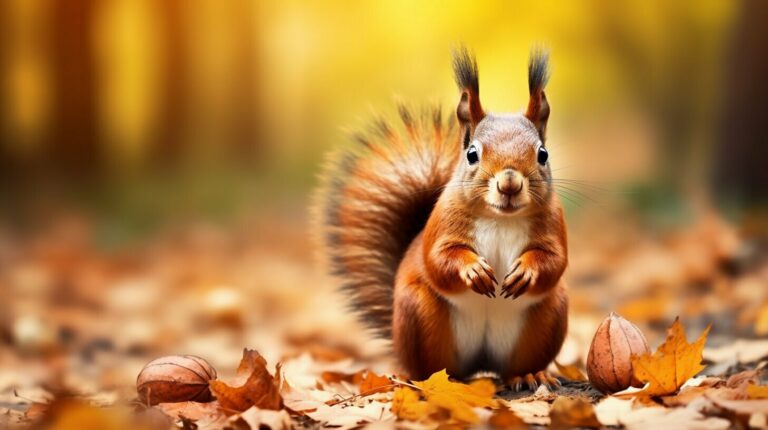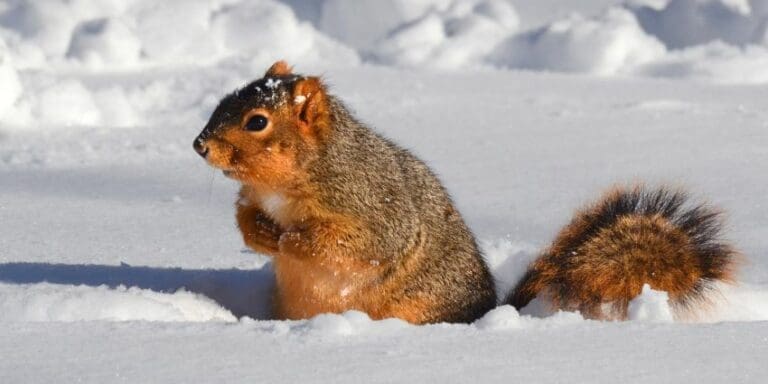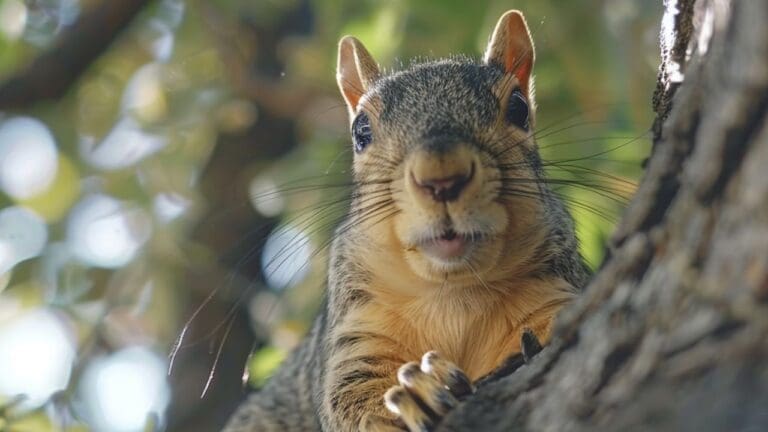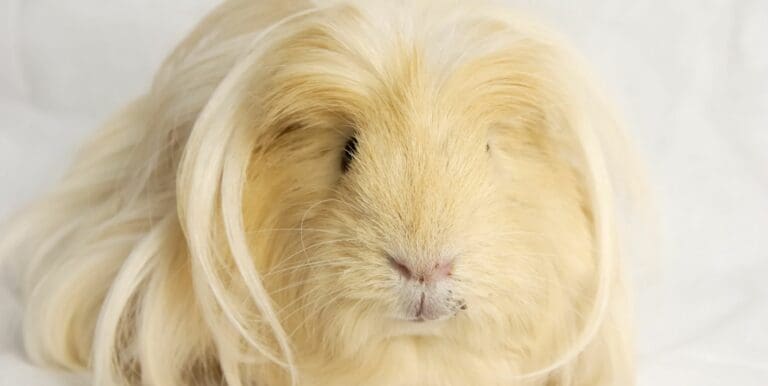10 Characteristics of a Squirrel: Adorable Traits & Behaviors
Move over, cats and dogs, squirrels are the newest darlings of the internet. With their furry tails and perky ears, these little critters have captured the hearts of many. But what makes squirrels so special? In this article, we’ll explore the top 10 characteristics of a squirrel that make them so lovable.
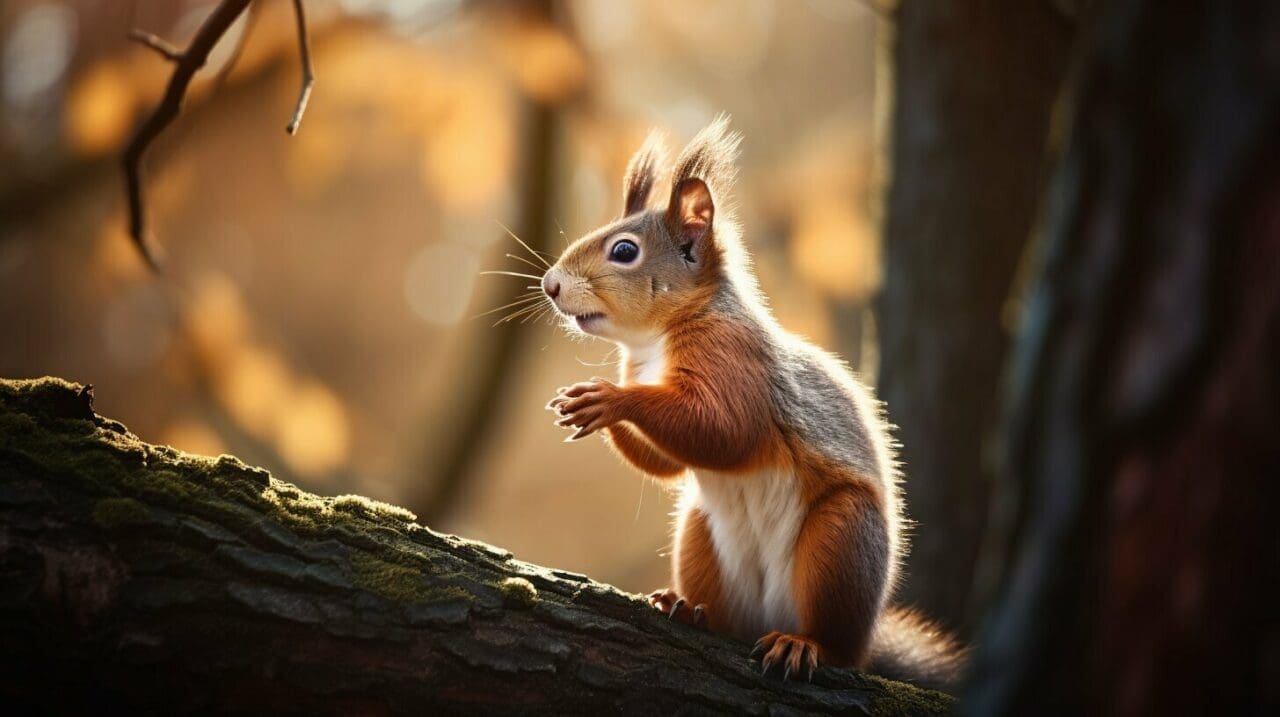
- Squirrels are experts at gathering and hoarding food for the winter.
- These bushy-tailed creatures can leap up to 10 times their body length.
- Squirrels have sharp claws that allow them to climb trees with ease.
- They are famous for their habit of burying nuts and seeds, and sometimes forget where they’ve hidden them.
- Squirrels have amazing vision and can detect colors that humans can’t see.
- They use their tails for balance, communication, and even as a blanket during cold weather.
- These little acrobats can run up to 20 miles per hour.
- Squirrels have strong incisors that never stop growing, allowing them to gnaw on tough material like nutshells and bark.
- They are great communicators and use a variety of sounds to convey messages to other squirrels.
- Squirrels are adaptable creatures and can thrive in a variety of habitats.
Key Takeaways:
- Squirrels are talented hoarders and climbers, with sharp claws and bushy tails.
- They have excellent vision, strong incisors, and are great communicators.
- Squirrels are adaptable and can run up to 20 miles per hour.
Common Squirrel Species
From the feisty red squirrel to the plump gray squirrel, there are several different species of squirrels that inhabit various parts of the world. Each species has its own unique physical features and habitat preferences.
Gray Squirrels
The gray squirrel is perhaps one of the most common squirrel species in the United States. With its bushy tail and gray fur, this squirrel can be found frolicking around parks, backyards, and forests. They enjoy eating nuts such as acorns and hazelnuts.
Red Squirrels
The red squirrel is a smaller species of squirrel characterized by its reddish-brown fur and tufted ears. They can be found living in forests and woodlands throughout North America. Red squirrels are known for their agility and love for pine cones.
Fox Squirrels
Fox squirrels are the largest species of tree squirrel in North America. With their reddish-brown fur, creamy undersides, and bushy tails, they can be identified easily. These squirrels can be found in forests, woodlands, and suburban parks, where they enjoy snacking on nuts and fruits.
Flying Squirrels
While not technically a separate species, flying squirrels are a unique type of squirrel in that they glide through the air using the patagium, a skin flap that stretches between their front and back legs. These squirrels can be found in forests throughout North America and Europe.
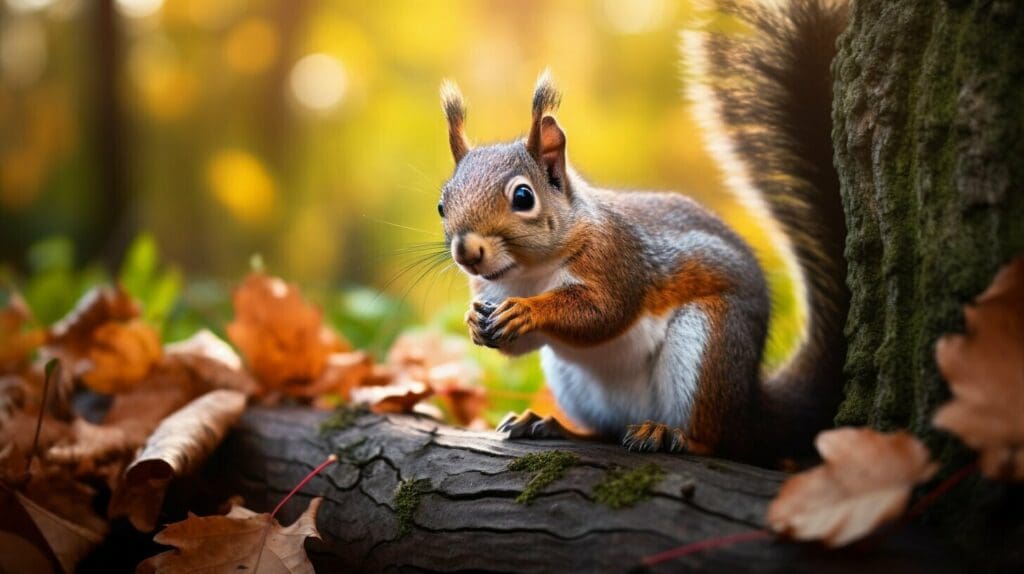
Whether you come across a playful gray squirrel in your backyard or a rare flying squirrel while hiking in the woods, each species of squirrel is a joy to observe and appreciate.
Squirrel Food Habits
These fluffy-tailed rodents are not picky eaters. Squirrels are known to have a voracious appetite and will eat almost anything within their reach. Their diet mainly consists of fruits, nuts, and seeds, but they occasionally consume insects, fungi, and even small animals.
One of the most fascinating things about squirrels is their hoarding behavior. They can gather thousands of nuts in a single season and store them in various locations to prepare for winter. These central food storage areas are known as middens.
Although squirrels love munching on nuts, they don’t solely rely on them. They also enjoy munching on berries, acorns, pine cones, and sometimes even bird eggs. Their sharp incisors make it easy for them to crack open nuts and seeds, and their strong jaws can gnaw through tough tree bark.
Squirrels have a unique digestive system that allows them to break down hard-to-digest foods like cellulose. They also have an uncanny ability to digest toxic mushrooms, which may be fatal to other animals.
Did you know? Squirrels also have a habit of burying food items in the ground, which helps them locate food sources in the future. They have an excellent sense of smell and can sniff out buried nuts and seeds.

This image of a squirrel holding a nut illustrates just how much these little critters love their food!
Squirrel Anatomy
What makes squirrels so unique and fascinating? Well, their anatomy certainly plays a significant role.
First and foremost, squirrels are recognized for their bushy tails, which serve many purposes. Not only do they help with balance and navigation during acrobatic jumps and leaps, but they also function as insulation during cold weather. Additionally, squirrels use their tails to communicate with each other, flicking them in various patterns to convey specific messages.
Another crucial aspect of squirrel anatomy is their sharp claws, which enable them to climb trees and walls with ease. Squirrels’ feet are also designed with gripping pads that allow them to cling onto surfaces without slipping.
When it comes to food, squirrels have strong incisors that allow them to crack open nuts and chew through tough outer shells. They also have long, sensitive whiskers that help with detecting food and navigating in the dark.
Overall, the unique anatomy of squirrels perfectly suits them for life in the trees, and their adorable appearance only adds to their charm.
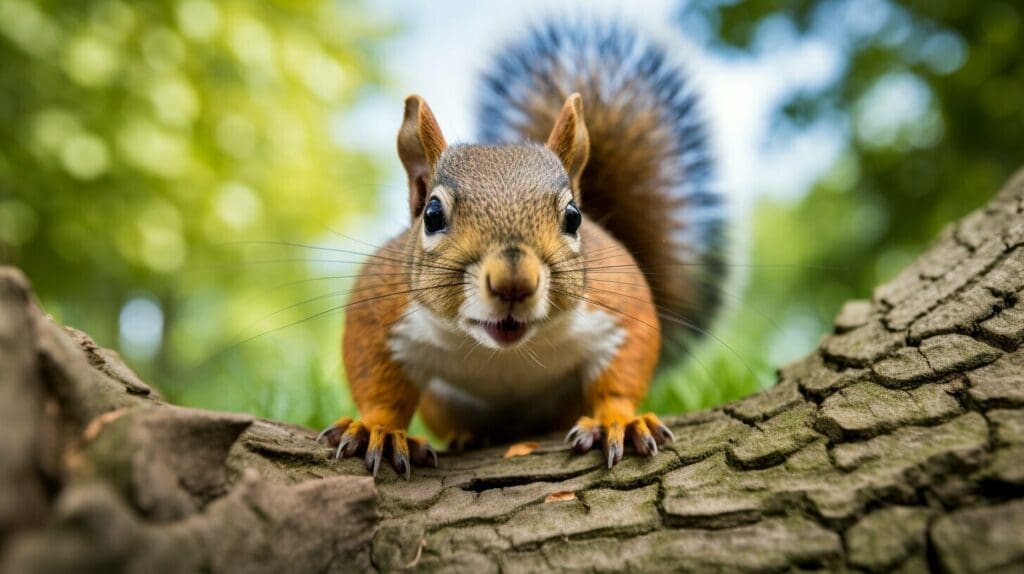
Squirrel Habitat
Squirrels are adaptable creatures that have learned to thrive in a variety of habitats. While they are most commonly associated with forests and woodlands, they can also be found in urban parks, residential areas, and even on college campuses.
One of the most important aspects of a squirrel’s habitat is the presence of trees. Trees provide squirrels with food, shelter, and a means of transportation. Squirrels are expert climbers and can run up and down tree trunks with ease. They also use tree branches as highways to move from tree to tree without touching the ground.
Squirrels are known for their nest-building skills and will construct elaborate homes made of leaves, twigs, and other materials found in their environment. These nests, also called dreys, are typically located in the branches of trees, providing the squirrel with both protection and a high vantage point to watch for predators.

In addition to trees, squirrels also need access to a variety of food sources. They are known for their love of nuts, such as acorns and walnuts, as well as seeds, fruits, and even bird eggs. Squirrels are opportunistic eaters and will take advantage of whatever food sources are available to them in their habitat.
Overall, squirrels are highly adaptable creatures that have learned to thrive in a wide range of environments. Trees provide them with the essential elements of food and shelter, and squirrels have developed a range of skills to take advantage of these resources.
Squirrel Adaptations
When it comes to adapting to their environment, squirrels are pros. These bushy-tailed acrobats have evolved some impressive skills that allow them to thrive in their habitats.
Patagium
One of the most fascinating adaptations of squirrels is their patagium, a thin, stretchy membrane that extends from their wrists to their ankles. This allows them to glide through the air, sometimes for distances of up to 90 feet! It’s like having their very own squirrel-sized parachute.
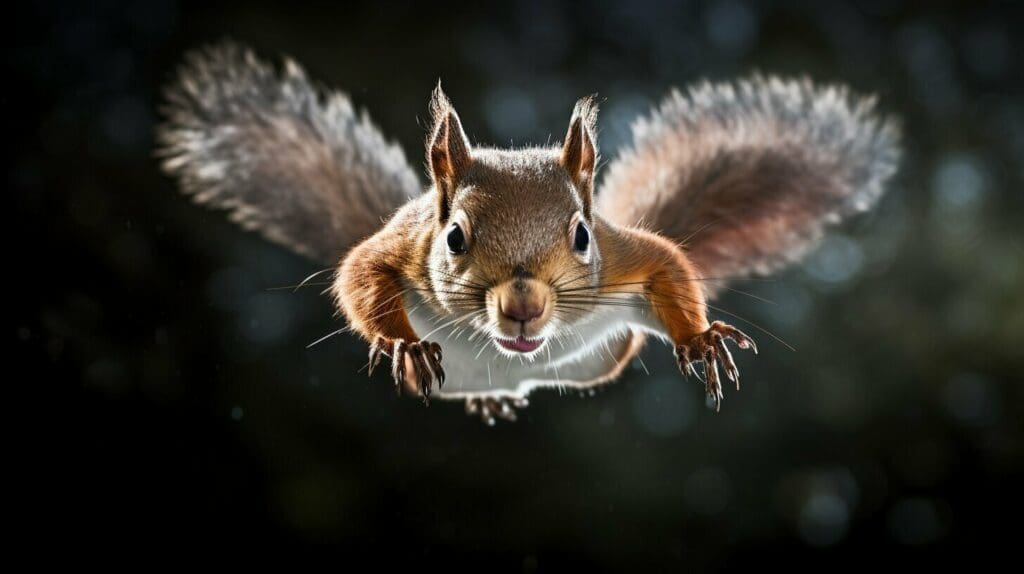
Camouflage
Squirrels use their fur color to blend in with tree bark and other natural surroundings, making them nearly invisible to predators. This remarkable ability to camouflage themselves helps them stay safe while foraging for food and nesting.
Agility
Squirrels are also incredibly agile creatures, thanks to their sharp claws and strong hind legs. They can leap up to 10 times their body length, run at high speeds, and even climb down trees headfirst!
It’s no wonder that squirrels are such a beloved species. Their cute and cuddly appearance, coupled with their incredible adaptations, make them one of nature’s most entertaining creatures.
Squirrel Life Cycle
From birth to maturity, the life cycle of a squirrel is full of challenges and survival strategies.
Squirrels typically have a lifespan of 5-10 years in the wild. They reach sexual maturity at around one year of age and mate once or twice a year, depending on the species.
After a gestation period of approximately 30-45 days, the female squirrel gives birth to a litter of 2-8 baby squirrels, also known as kits or pups. These newborns are naked, blind, and helpless, weighing less than an ounce.
For the first few weeks of life, the mother squirrel feeds her babies with milk and takes care of them in the nest. As they grow, the kits begin to explore their surroundings, learn to climb and leap, and eat solid foods.
Young squirrels face many challenges in their first year of life, including predators, harsh weather conditions, and finding their own food and shelter. Many do not survive their first winter.
However, those that do survive often live to become adult squirrels, mating and passing on their genes to the next generation. With their adorable looks and fascinating behaviors, it’s no wonder that squirrels have captured the hearts of humans for centuries.
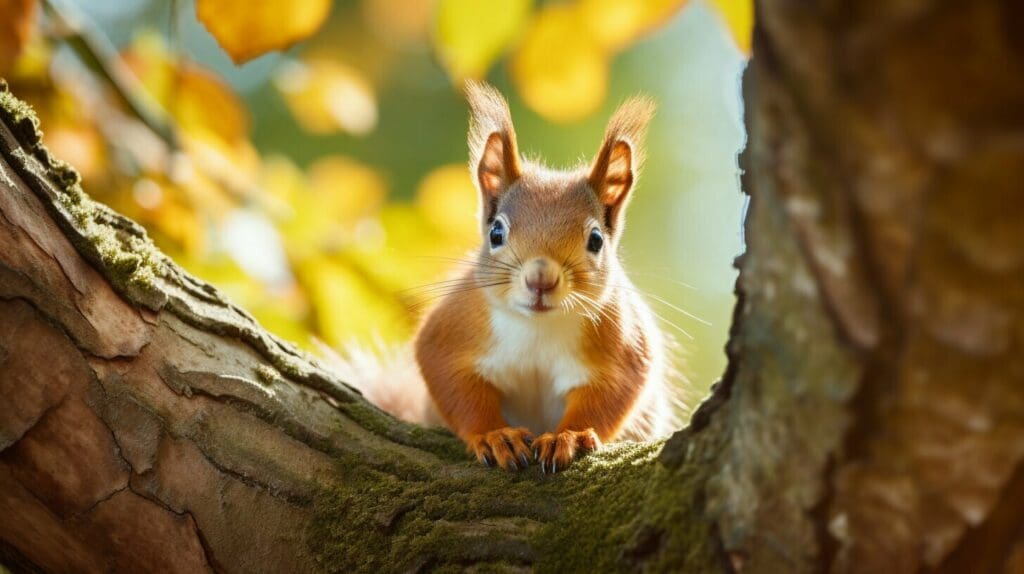
As the famous writer John Muir once said, “The squirrel is one of nature’s happiest accidents.” Let’s appreciate and protect these charming creatures and their amazing life cycle.
Conclusion
In summary, squirrels are more than just cute, bushy-tailed creatures that scurry up trees. These adaptable animals possess unique characteristics that have allowed them to thrive in various habitats. From their love for nuts and fruits to their ability to glide through the air, squirrels are fascinating creatures worth appreciating.
It’s essential to protect the habitats where squirrels live, as they play a crucial role in maintaining the natural balance of ecosystems. By appreciating and respecting the squirrel’s place in the environment, we can ensure their survival for generations to come. So the next time you spot a squirrel, take a moment to admire their incredible traits and behaviors, and remember to keep their home safe.
FAQ
Q: What are some adorable traits of squirrels?
A: Squirrels have a range of adorable traits, including their furry tails, cute little ears, and playful nature. They are known for their acrobatic abilities and their habit of burying and retrieving nuts.
Q: How many species of squirrels are there?
A: There are many species of squirrels, but some of the most common ones include gray squirrels, red squirrels, and fox squirrels. Each species has its own unique characteristics and habitat preferences.
Q: What do squirrels eat?
A: Squirrels have a varied diet that includes nuts, seeds, fruits, and even bird eggs. They are also known for their behavior of hoarding food for the winter months.
Q: What are some notable features of squirrel anatomy?
A: Squirrels have bushy tails that help them maintain balance while climbing. They also have sharp claws for gripping tree bark and strong incisors for gnawing on nuts and other food items.
Q: Where do squirrels live?
A: Squirrels are found in various habitats, including forests, woodlands, and urban parks. They are skilled nest builders and depend on trees for shelter and survival.
Q: How do squirrels adapt to their environment?
A: Squirrels have remarkable adaptations that allow them to thrive in their surroundings. They can jump long distances, use their patagium to glide through the air, and blend in with tree branches for camouflage.
Q: What is the life cycle of a squirrel?
A: Squirrels go through a life cycle that starts with birth and ends with maturity. They have unique breeding habits, a gestation period, and young squirrels face survival challenges before reaching adulthood.
